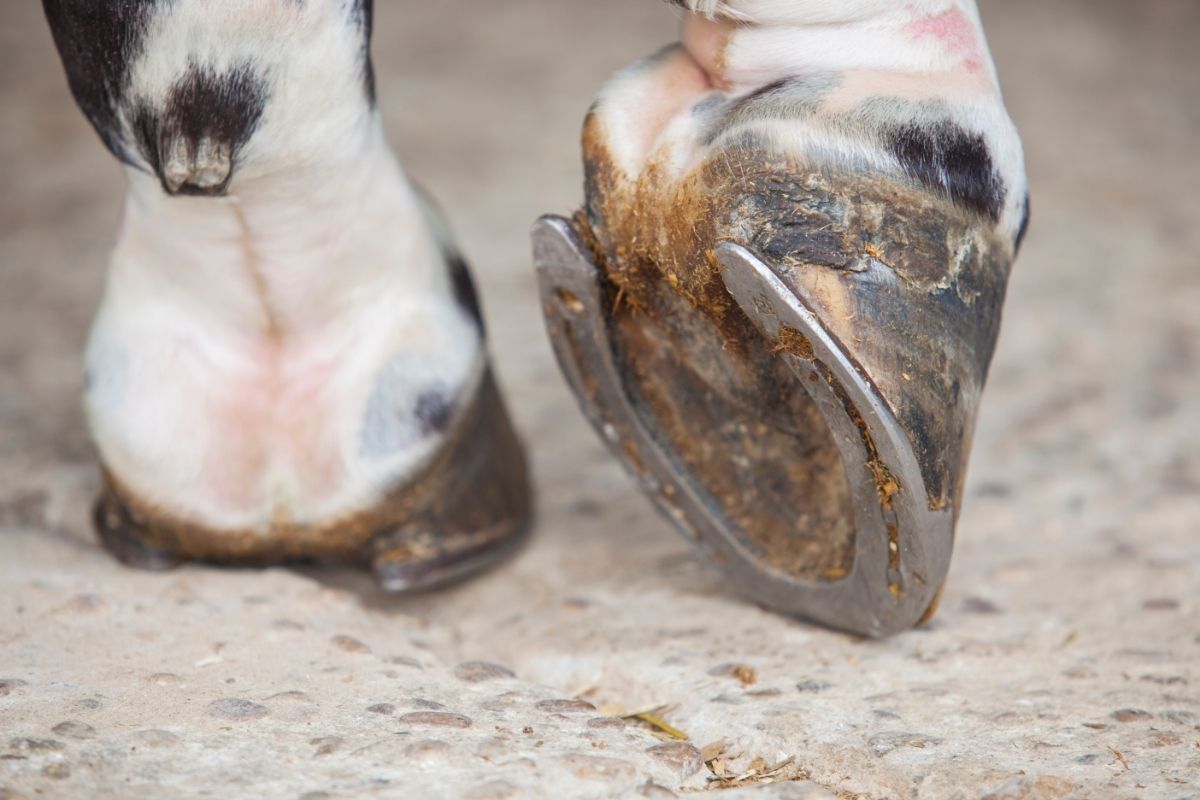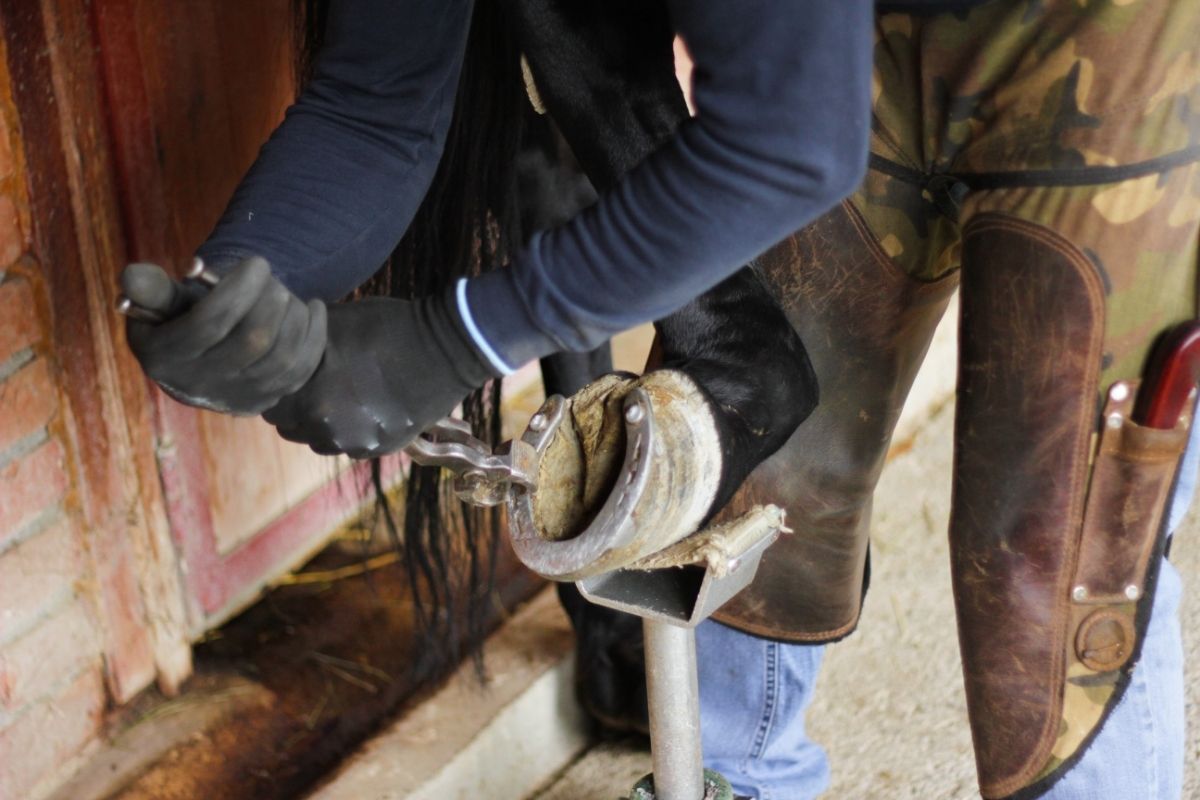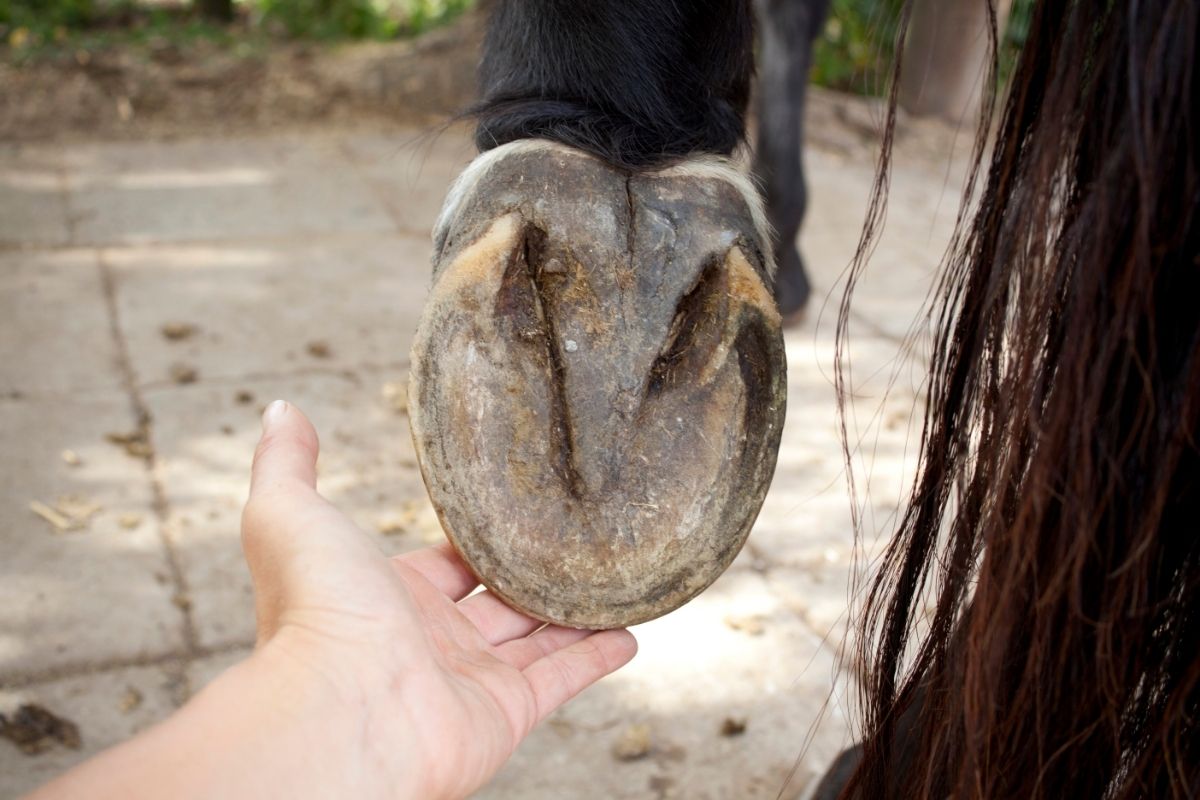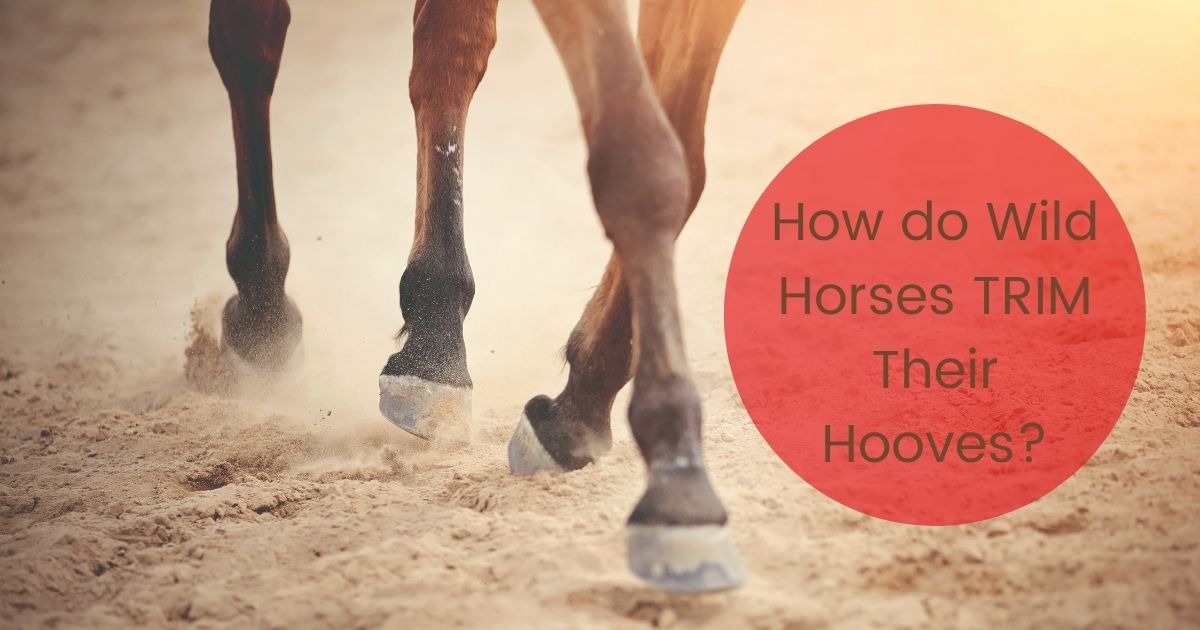The Anatomy of The Horse Hoof
If a domesticated horse needs so much hoof maintenance, how do wild horses trim their hooves when there’s no farrier, owner, or veterinarian present? As any horse owner and veterinarian will tell you, the anatomy and structure of a horse hoof is a complex system consisting of bones, tissues, nerves, and vessels.
The hoof will need careful maintenance – including frequent trimmings by a specialist farrier. Well, take a read below to learn more about the wild horses, their hooves, and one of the wonders of nature in our world.

It’s Survival of the Fittest When it Comes to Wild Horses
Unlike our domesticated horses, wild horses don’t need to have their hooves trimmed. One of the reasons for this is that wild horses are always on the run, covering long distances on tough gravel and many other types of terrain. But only while carrying their own weight!
Another reason wild horses don’t need trimming is that the horses that aren’t capable of trimming their hooves themselves will not survive in the wild. In nature, it is survival of the fittest.
If the hooves become twisted, broken, or too long, a wild horse won’t be able to escape predators, survive the harsh environment or keep up with the herd.
In the wild, a horse with hoof issues that cannot keep up with its running herd will not survive long enough to mate. This natural selection results in only individuals with the correct genes for hoof health managing to breed, thereby furthering the genes for healthy hooves.
Of course, there are “wild” horses in some places of the world that come from a domesticated population. These horses have been allowed to roam freely.
Humans monitor the populations of semi-wild horses, and even here, the “weak” or sick individuals will often be removed by a carer. Even here, there’s a selection of the fittest individuals – although humans do it.
With domesticated horses, breeders decide what genes are furthered in the next generation, not nature. Although hoof health is an essential part of breeding healthy horses and many breeders keep it in mind, it may rarely be the main focus when considering breeding two horses together.
For wild horses, it is essential to have hooves that make them capable of surviving and being part of the herd.

What Are Horse Hooves Made of?
Before discussing how wild horses trim their hooves, it is also essential to know what a hoof is!
Commonly horse hooves get compared to the toenails of humans. They are indeed made up of the same material (keratin) as our nails, but hooves are a far more complex and intricate system, and they carry a lot more weight!
When humans walk, we step down on several bones that will split into even more bones – our toes. When a horse walks, the hoove is basically the tip of the foot – just one toe or bone to carry all that weight.
The inner wall is the laminar layer around the inner hoof bone (Latin: Os Phalanges distalis). This inner layer is far more pliable than the rigid outer wall, allowing the inner wall to expand with movement and absorb shock – protecting the vital parts as well. It is this inner laminar layer that carries most of the weight of the horse.
Around the laminar layer is the hoof wall. This is the hard, horny outer layer made of keratin. It has no nerves or blood vessels; it is a continuously growing material that protects the laminar layer and the bone.
The horn needs trimming along with a softer keratin layer on the bottom of the hoof, the sole of the horse.
The sole also protects the inner part of the hoof and is designed to be weight-bearing. It connects with the terrain and is softer than the hoof wall. As a result, it is often worn down a lot easier than the outer wall. Even still, domesticated horses often need this part trimmed by a farrier as well.
How do Wild Horses Trim Their Hooves?
Wild horses spend their whole life running. Whether it’s towards better feeding grounds or away from predators, they cover long distances – some research suggests up to 20 miles per day!
The hooves will be worn down slowly and correctly by rocks, grass, and other terrains, all the while becoming more robust and more viable than the hoof of a domesticated horses. As the horses are only moving as much as they want and can most of the time, the process will be slow and gradual, preventing excessive wear and tear of the hooves.
In comparison, domestic horses often either move too much, carry too much weight, or not enough. As we humans have historically moved from primarily using our horses as a labor force to using them more for sport, horses’ need for trimming has changed.
A workhorse carrying a lot of weight on a hard surface will, in most cases, need shoes to protect them, as well as frequent trimmings to ensure that this horseshoe is placed correctly and adequately supports the horse.
At the same time, sport horses that are primarily exercised in soft sand or ground will need frequent trimmings to ensure the hooves are worn down. This balance of protection and trimming is one that wild horses, throughout several thousand years, have perfected to trim down their hooves and keep them healthy naturally!
Natural Hoof Care in Wild Horses
Some animals will intentionally wear down their nails, but wild horses do it by simply moving around, filing down the horn of the hoof wall, and even the soft part of the sole. But it’s not just about the movement. It is also about where they stand and live that keep their hooves healthy.
A domesticated horse may sometimes stand in moist and wet environments – like in a flooded pasture. For all types of horses, moisture can cause a whole load of hoof issues, as it can lead to bacterial and fungal infections. Here wild horses can naturally move to higher grounds, away from the moisture.
Another critical difference between domesticated horses and wild ones is that wild horses don’t have to work. They move around all day, but they never have to carry humans or drag a heavy load. Although riding and being ridden is a source of joy for many horses and their owners, there’s no way around the fact that it is an abnormal load on the anatomy.
Increased workload and soft and smooth terrain can lead to weak hooves and imbalances that may require shoeing for correct function; an issue wild horses don’t have. They take care of their hooves all naturally!
What Are Horseshoes for?
Horseshoes are U-shaped plates that are meant to protect a horse’s hooves. Whether a horse needs shoes and what type they need is an entirely individual decision that needs to be based on the horse’s health, activity, and environment.
Historically, horseshoes are made from steel or aluminum, but manufacturers can now make newer models from other materials like rubber or plastic. The horseshoe then needs to be fitted to the hoof’s bottom, often by using nails or sometimes straps and velcro.
The shoes are worn primarily to strengthen and protect the hooves. Although we’ve been talking at length about how wild horses wear their hooves down and the benefits of that–walking with a load on hard, rough surfaces like cement will cause the hooves to be worn down too fast! Not something we want either for our domesticated friends.
Horseshoes also add traction, give the horse increased stability and grip in rugged terrains and bad weather, and improve the balance. Some horses also wear shoes for medical reasons, to correct the position of the legs, or to assist in the recovery of diseases that affect the hooves, for example, laminitis or arthritis.
Whether a horse needs shoes is, in the end, a personal choice. Some argue that shoes provide needed protection, with others arguing that regular trimming is enough to keep an average horse happy and healthy. It all depends on the horse!
The History of Horseshoes
When horses became domesticated around 6000 years ago, they didn’t wear shoes or had farriers to trim the hooves. But history tells us that the ancient Greeks had their own strengthening methods and wore their horse’s hooves down!
They added a thick layer of stones to the enclosures to naturally wear down the hooves and harden the frogs of their feet.
Later, the Romans were allegedly the first to invent a type of horseshoe called a ‘hippo sandal‘ that looked a lot like the current day horseshoes. The Romans made it from plants, rawhide, or leather straps that got nailed to the horse hooves.
In northern Europe, people started using metal that got nailed to the hooves sometime around the sixth and seventh centuries to protect them from the cold and wet climate and give the horses a better toehold in the terrain.
By protecting the horses from the harsh conditions and daily wear and tear when carrying heavy loads, the northern Europeans prevented excessive damage to the hooves. They made the horses more usable for more extended periods of time.
Then in 1835, the first horseshoe machine was patented in the United States, allowing for increased production and a much more mainstream design of horseshoes. Today, most horseshoes are made either by a smith or from mainstream production, with as many options as there are horses!. There really is a shoe for every foot!
What is Horse Barefooting?
Are all domesticated horses wearing horseshoes then? No, not at all! More and more equestrians are returning to the ‘barefoot’ method, where their horses wear no shoes.
One natural benefit of ‘barefooting’ is that the hoof capsule can expand naturally without restrictions from a shoe, and some studies suggest that barefoot horses significantly improve hoof shapes. However, the downside is a lack of protection and stability the horseshoes provide, as we’ve covered earlier.
Another thing to consider, however, when thinking of going barefoot is that a horse without shoes will need more maintenance. Generally speaking, a barefoot horse will require more frequent trimmings by a farrier to ensure that the horn is growing correctly and without compromising the inner parts of the hoof. Otherwise, the horse may start having problems.

Interesting Facts About Wild Horse Hooves
In the end, although wild horses look very similar to our domesticated horses, there are some differences physiologically. For example, they have more muscular legs and stronger hooves, stemming from walking the rough terrain every day of their life and surviving in the wild.
They also suffer from far fewer diseases related to the hoofs but keep in mind that this is partly because the sick and weak horses will be removed from the herd by nature. So it is a challenging but wonderful life for the wild horses roaming their natural habitats – and luckily, they’ve adapted to trim their hooves just the right way to keep themselves healthy and running!
